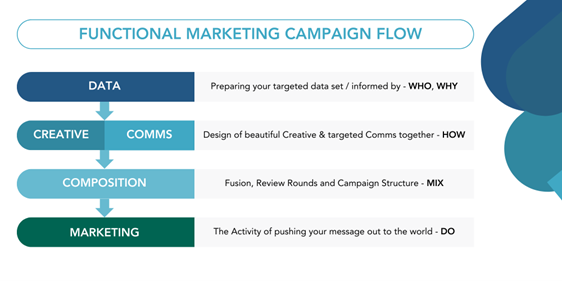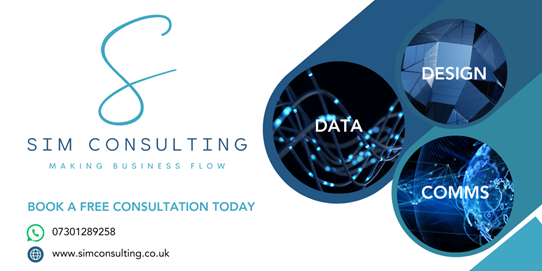
The Importance of Data Segmentation in Modern Marketing
In today's fast-paced digital landscape, businesses often struggle with the effectiveness of their marketing efforts due to poorly segmented data. When audience data is not properly segmented, marketing campaigns become broad and unfocused, resulting in missed opportunities and wasted resources. Instead of reaching the right person at the right time with a tailored message, businesses end up broadcasting generic messages that fail to resonate. This lack of precision leads to low engagement, poor conversion rates, and a stagnant sales funnel. Essentially, without proper data segmentation, your marketing efforts can feel like shouting into a void.
Why is Audience Data Segmentation Important?
Audience data segmentation is crucial for maximising the effectiveness of your marketing systems, nurturing leads down the sales funnel, and enabling cross-selling of complementary products or services. It allows you to reach the right person at the right time with the right message, transforming your marketing from a broad, unfocused effort into a precision-guided strategy. Generic, one-size-fits-all marketing blasts often result in poor conversion rates and low engagement, leading to the adage: "If you try to speak to everyone, you speak to no one."
Ways to Segment Your Audience
Modern tools like Mailchimp and HubSpot offer robust features for audience segmentation. These platforms allow you to define custom properties, audience fields, and tags to organise your audience into highly specific groups. By leveraging these tools, you can create detailed segments and lists that can be targeted more effectively. For instance, you can segment your audience based on demographics, purchase history, engagement level, or other custom criteria that are relevant to your business.
Types of Structural Definitions and Use Case Examples
When it comes to segmenting your audience, the possibilities are extensive. Here are some key structural definitions you can specify, along with practical use case examples:
- Date of Enquiry: Track when a customer first showed interest in your product or service.
- Example: Sending a follow-up email one week after a customer's initial enquiry to offer additional information or a special promotion.
- Enquiry Details: Know exactly what they enquired about.
- Example: Customising email content to address the specific product or service a customer enquired about, demonstrating your attentiveness to their needs.
- Purchase Date: Record when they made a purchase.
- Example: Sending a thank-you email immediately after purchase, and a follow-up email a month later to request feedback or reviews.
- Purchase History: Understand what products or services they bought.
- Example: Recommending complementary products or services based on their purchase history, such as accessories for a device they bought.
- Current Usage: Identify what they're currently using.
- Example: Offering tips, tricks, or advanced features for a product they currently use, enhancing their user experience and engagement.
- Renewal Dates: Keep track of when their subscriptions or services need renewal.
- Example: Sending reminder emails as their renewal date approaches, offering early renewal discounts or added benefits.
- Lifetime Value (LTV): Monitor how much they have spent with your business over time.
- Example: Creating loyalty programs or exclusive offers for high-value customers to reward their loyalty and encourage further spending.
- Customer Profiling: Define the type of organisation or customer profile they represent.
- Example: Tailoring marketing messages to address the specific needs and pain points of different customer segments, such as small businesses versus large enterprises.
The Empowerment of Data Segmentation
By implementing these segmentation strategies, you gain the power to automatically nurture customers in a highly personalised way. For example, you can cross-sell products at the optimal time, ensuring your messaging is timely and relevant. Moreover, data segmentation allows you to craft personalised marketing messages that truly resonate with specific groups, engaging them in a meaningful way. This targeted approach not only enhances customer satisfaction but also drives higher conversion rates and fosters loyalty.

Conclusion
Data segmentation is a cornerstone of effective marketing. It enables you to deliver the right message to the right person at the right time, ultimately driving better results and deeper customer relationships. By utilising tools like Mailchimp and HubSpot, you can create finely-tuned audience segments based on a variety of criteria, empowering you to nurture leads, cross-sell products, and engage customers in a personalised manner. In the ever-evolving marketing landscape, segmentation is the key to cutting through the noise and connecting with your audience on a deeper level.
At SIM Consulting, we specialise in helping businesses flow by supporting the proper leverage of marketing, CRM, and data systems and offering training sessions and material for key team members to empower them to take things forward. We help you to ensure that your data is segmented effectively and your CRM and/or marketing systems are set up for success, empowering you to maximise the potential of your marketing efforts and drive your business forward.


